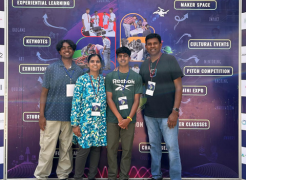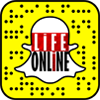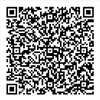By PRANAVESH SIVAKUMAR
Ramoshan Canagasaby’s saga is a tale of tears, turbulence, travails, troubles, and triumph, traversing through Jaffna, Moratuwa, Chennai and now in California. Born in Colombo, Ramoshan had his early education at Hindu College, Bambalapitiya. His father was attached to the Ceylon Petroleum Corporation, an average family of five, with limited resources. Came July 1983 riots, Ramoshan and family had to flee Colombo to Nallur, Jaffna. He continued his education at St John's College, Jaffna. With the escalation of war and the exodus from the North, he and his family had to cross the Kilali Lagoon, neck-deep in water and in catamarans, under the cover of darkness, a mission of life and death, holding on to dear life. Through Paranthan, they came back to Colombo by land. He rejoined his old school and came out with flying colours at the A/L exam to enter the Engineering Faculty of the University of Moratuwa. A two-year stop-start reign at Moratuwa made him join the prestigious IIT, Madras (now Chennai). His performance there earned him a number of scholarships worldwide.

He has now been serving Apple Inc. as the Senior Manager, Chip Design Program for the last six-and-a-half years. Having served Intel at a high pedestal earlier, Ramoshan remains humble, not forgetting his family’s trying times in Sri Lanka. He visits his homeland to render charitable services in the Northeast. Among such roles are being the CTO for Information Technology Education and Entrepreneurship Foundation and a volunteer at Yarl IT Hub (Yarl - short name for Jaffna in Tamil). Mirror Life had a chat with him.
Q Who is Ramoshan Canagasaby?
If I am standing in good stead, we need to rewind a lot for that. Born in Colombo, studied at Hindu College, Colombo, until 1983, as a refugee, “on my birthday”, relocated to Jaffna in a bid to revive life, and that can be a watershed moment. At the age of 9 my house was fully burnt and battered. A new lease of life was presented courtesy of Jaffna. Then I got selected to St. John’s College, Jaffna, and a senior sir, personally approached and wished me well, saying I had a rare seat. All these I considered as a good stepping stone. The war days left a lasting lesson in me. All those made a man of me, too.
Q We have only around 15 Lankans working for Apple in the entirety of the US. How does that feel?
Apple is a global company. True to Silicon Valley culture, we interact with and value the other person as a fellow engineer, not by race or culture. Having said that, the only time I identify myself as Sri Lankan is when a few of us meet for lunch as Lankans. Looking back, each person who gets the opportunity to work at a world-class company like Apple will have faced a lot of sweat and demanding work along the way to arrive here. In that sense, I feel we all should be proud of the Sri Lankan DNA, especially the values our parents instilled regarding education, integrity, and the belief that there is no substitute for hard work.
Q If your talent is tapped and invited to serve SL outside the projects you're serving, would you take up the invitation?
Yes, without a second thought. My dream retirement will be semi-retirement. I already envision myself spending 50% of my time here (in Sri Lanka) on my current projects. It can only increase if I get an opportunity to serve this beautiful country. The ideal opportunity would be on the development side of things with a free hand for a set period, say 2 years.
Q Your memories after relocating from Colombo to Jaffna..
Those are unforgettable. We did not have many facilities. We lost everything, went back to square one and started from ground zero. Albeit my father was attached to the Petroleum Corporation, there was no substantial salary, and my mother was only a homemaker. We lived happily, with little money, much happiness, during the war and the violent days.
Q You were schooled in two schools in SL – St. John’s Jaffna and Hindu College, Colombo. Thereafter, IIT Madras.
When I returned to Colombo during the height of the conflict in 1990, I cleared A/Ls with flying colours. In ‘92, at the University of Moratuwa, I got a seat in engineering. The wait for that was two years, so in the meantime, I enrolled for CIMA. The late President Premadasa awarded me a gold medal, and in two months, he was assassinated; therefore situation was deteriorating. We walked in fear.
Since I had good results, I applied to the US, UK, and Canada – all these places offered scholarships too. We did not have enough funds since we hailed from an average middle-class family. I got a response from the US with a scholarship. At this point, my mother preferred that I study close by. That was my introduction to IIT Madras, the US’s equivalent and then itself a factory of producing quality IT graduates. Admission meant I had to sit some tests, the fees were lower, and then I set foot into IIT Madras. When I reflect in retrospect, that seems to be one of the best decisions.
Q You cleared IIT Madras first, America next. How did you get that opportunity?
Each university had a template with criteria. We followed that with sitting for exams. The IIT name itself got us admissions, carrying us through for scholarships too. Then came the University of Iowa. During that phase, an IT boom was underway. I pounced on the opportunity, applying for jobs. When I was pursuing my Master’s, Silicon Valley was a dream and desire. The Intel company was in a maturity period. I applied for an internship. I worked hard and extended the period. My superiors/ managers were all impressed and told me to complete my Master's and return.
Q You completed your intel project. How was your path to your professional career?
I eventually entered Intel. Those were the heydays for Intel. Now they have suffered a dip. If they tap your talent and assess your worth, they will not let go of you, and that’s exactly how I got my Green Card in 2004. I then developed the appetite to study, and the avenue for that was to join a start-up. From a 10,000-strong Intel, I joined a 10-man start-up as the tenth man. Spent three years there and in various other places, too.
Q Having an Apple device in the hand itself is quite a deal. Here you’re working for them. Can you reveal your designation, your growth?
Apple is truly an amazing company. Their uniqueness is driving innovation and aggressive deadlines, sometimes trackable over hours itself. That’s the concept and culture made and maintained since Steve Jobs to Tim Cook. I like Apple because even after six-and-a-half years, I still learn today. That’s the kind of job, Engineering Program Management, I was looking for.
I am in a chip-designing department. I essentially lead a team that solves issues of chips from conceptualisation to final product, until reaching consumers, unblocking issues during that process. The IP is featured in all products – iPhones, MacBook, iPad, Watches, to untold and unannounced products.
Q What does it take to make it to Apple?
There are many avenues. To start with, one should decide between hardware and software. I’m into hardware, designing chips. Software can be easily learnt, though. There are ways for both. If you are to join Apple, the interview process is very tough. I myself have recruited many for my own team. Initially, we do a phone screen (the first step of an over-the-phone screening with the candidate checking their background and job requirements). Then an all-technical interview, and the unique part is, for instance, if the panel consists of seven, all have to say yes. Even if one refuses, they are dropped. If successful, we then shortlist them to our superiors, the Senior Vice President, as a package and debrief. He or she peruses every package.
As I said, these are the unique facets of Apple. Only if perused and persuaded, we go ahead with hiring. However, if you have worked hard, sound, and solid in your subject, you need not worry over anything. The easier part is, you would be interviewed entirely based on your CV. Nothing outside that. If you're sincere in that, you will be through. These are the interview processes. Preceding the interview, applying can be done by anyone.
However, the resume ought to be short, sweet, and striking. Personally, I do not run through resumes longer than one page. We also review the CVs based on keywords and exposure. By reviewing many, we are now trained to find and filter the authentic applications. Again, you need not brag about big degrees; if you explain and communicate the projects done in a clear, crisp manner, you get a chance.
Q Your advice?
IT aspirants have big dreams. My advice to IT folks is to keep an open mind and stay hungry. If there were ever a list of fields that tracked, IT would top that list. Remember the buzzword 'Internet of Things (IoT) '? It would be long gone in a matter of a few years, and now everyone is buzzing about AI. Soon, there will be quantum computing, prompt engineering, and who knows what else. But anyone with IT as a career will survive if they invest their capital into developing themselves and staying current. For others, discover your 'thing' and excel at it.
Q After IIT Madras and Intel, did you have a feeling you would get to Apple?
No. Apple happened accidentally. Silicon Valley is full of opportunities. It is still the start-ups and unicorns that power innovation in Silicon Valley. Not to say that the big mature companies are not innovating; they are, in their own way. But they do so within the constraints imposed by the strings attached due to their public nature and accountability to their stakeholders.
Q Was it ever a dream and desire to make it to Intel and Apple?
Not really. I was going with the flow, and things happen if you stay ahead of the curve. The only conscious decision I ever made was to try a start-up when I was young and restless. Once that happened, the rest fell into place like a jigsaw puzzle.
Q Your advice and message to Lankans?
I am still a Lankan myself. There is not much advice I can give. I trust the judgment of common Sri Lankans and have huge respect. They took it upon themselves to course-correct the country, only a couple of years back. They can own the issues and drive the solutions. Do not look outside but search inwards for solutions. The only criterion I would say they should use in picking an option is to ask if the solution is sustainable and equitable for all the communities.



0 Reviews